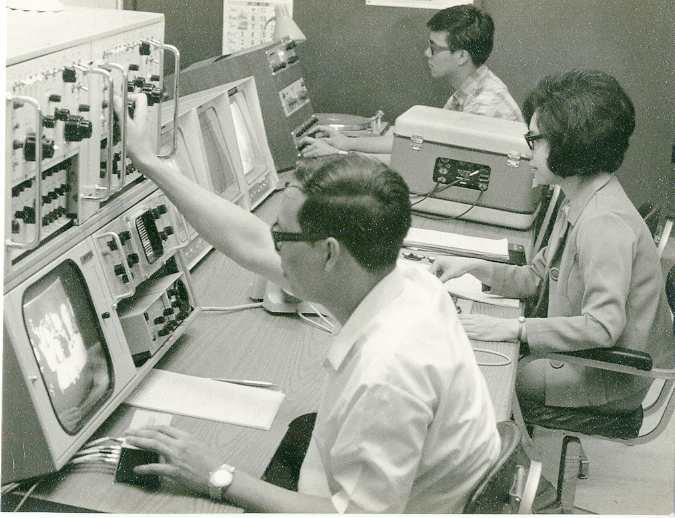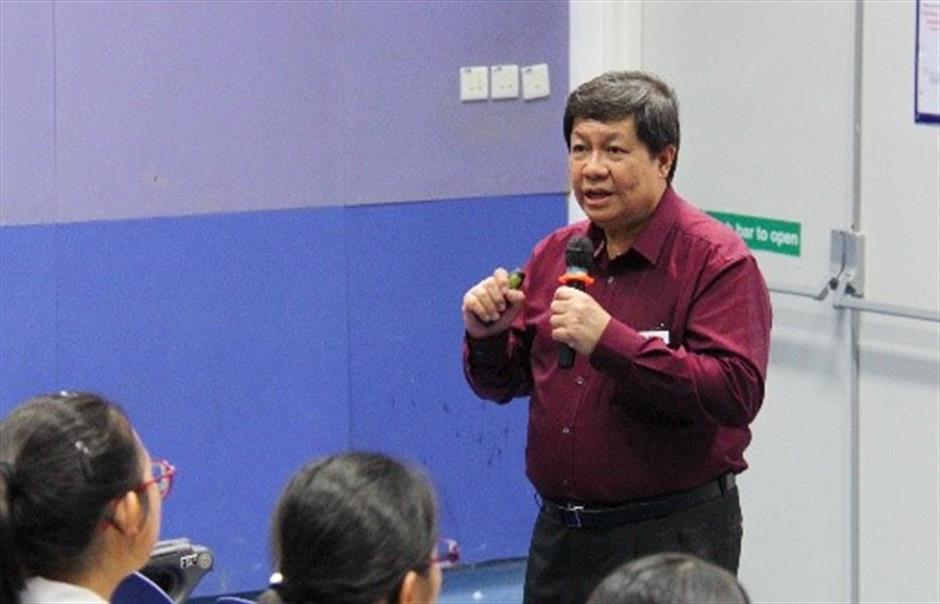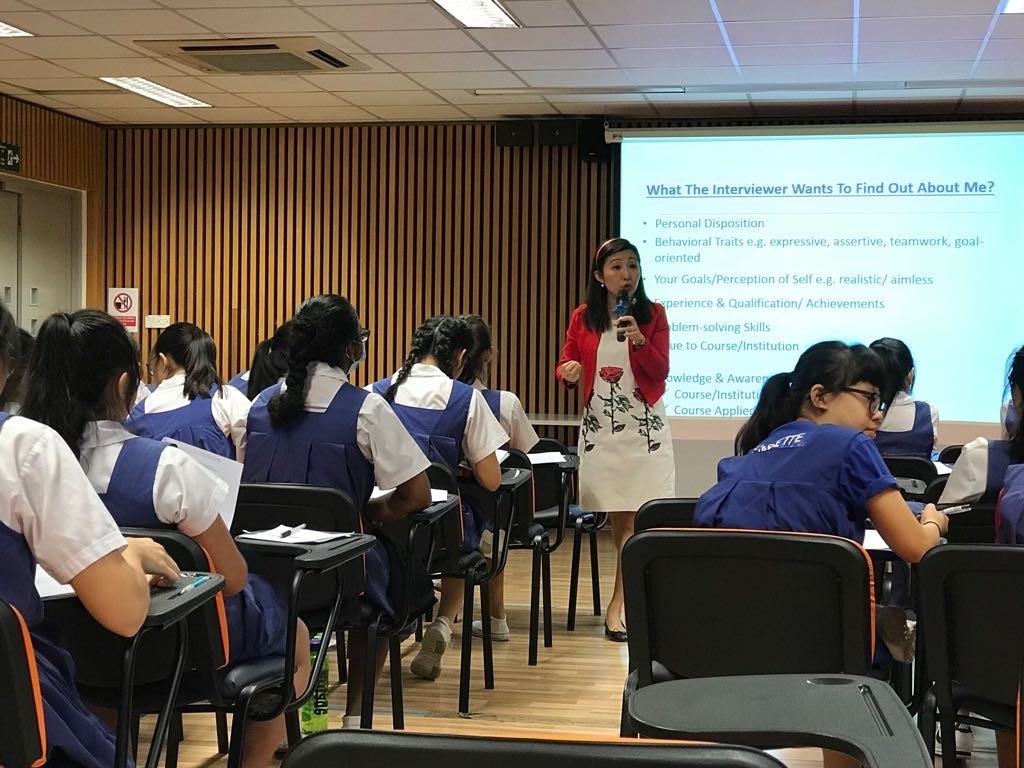Within the darkened room sits rows of chairs and one television set. It is the only set in the entire secondary school.
Suddenly, the lights come on and the teenaged students, led by their teacher, troop into the room. They dutifully sit down and the teacher turns on the TV. They watch a black-and-white screening of a 15-minute science lesson.
They thoroughly enjoy it. Many of the students do not have TVs at home, and the screening is like a welcome movie break in the middle of the daily class monotony.
The year was 1967 and it was then the advent of a new technological wave: TV. It had been just four years earlier in 1963 that Television Singapura started broadcasting and at the time, only one in 58 Singaporeans owned a TV set.
Teacher Miss Tan See Lai, 82, was a teacher and pioneer part-time newscaster who was tasked with producing educational content for the new medium.
“I was very proud of the shows we did at ETV,” said Miss Tan in an interview in the run-up to SG50.
The Road to ETV
Miss Tan was the only child of a widowed housewife mother. Her father died when she was eight years old. The Raffles Girls’ School alumnus had high ambitions for herself and dreamt of becoming a lawyer.
But her mother, had other ideas: “My mother told me there are two things a ‘good girl’ can do: You either become a nurse or a teacher. I decided to be a teacher.”
In typical gung-ho fashion, Miss Tan marched to the nearest school after her ‘O’ levels and told the principal, “I want to be a teacher.” The principal laughed and told her wait for the advertisement.
When she did apply, she was channelled to a special course – leading to a Certificate in Education – meant for high-flyers which allowed her to undergo teacher’s training full-time for two years, unlike her peers who had to train and teach at the same time. “I was paid $100 a month for just learning. I was 17, one of the youngest to go there, and it was a scholarship in a way,” she recalled.
Upon graduation in 1953, she taught in Haig Girls’ School and then Cedar Girls’ Secondary, in her favourite immaculate get-up of cheongsam and heels – even for sports classes.
She might have remained teacher for life. But as it turns out, that was the only teaching stint she ever did. Her crisp enunciation and diction – which meant she had been often called on stage to speak during her school days – soon led her on a different life path.
In 1958, she was awarded a three-year scholarship to study speech and training at the Central School of Speech and Drama in London. A Straits Times article at the time said she was the first Asian girl to be awarded a Diploma from the school.
She recalled flying to London in a propeller plane, on a long journey which included stops at over 20 places including Bangkok, Burma, Rangoon, India and Tel Aviv, because the small plane had to re-fuel. “In those days, there were no phone calls and writing letters was the best way to reach anyone here. It was a difficult time. But I was very lucky to be given the opportunity,” she said.
Upon her return in 1961, she taught speech to trainee teachers at the Teacher’s Training College. Singapore’s broadcaster also headhunted her to be a pioneer newscaster. She said: “I was not properly trained but there was nobody available and I became more well-known as a newscaster than as a teacher!”
But it was in 1967 that she would make a career-defining move, to the Education Ministry’s Educational TV unit to become a pioneer TV producer.
ETV Highs
With three producers, one programme supervisor and several assistants who were all trained teachers, the team spent their time coming up with educational programmes to screen to school students. They had to script, scout for talent, direct and film.
“I don’t know whether it was a Singaporean or Chinese thing, but we are very hesitant about directing people. I learnt how to direct. I even remember giving directions on how to kiss a hand!” she quipped.
Clad in her cheongsam, Miss Tan threw herself into directing these programmes, demonstrating movements herself and even working in the hot sun without complaint.
Miss Tan was also sent all over the world to countries including Japan, India, Sri Lanka and Africa to attend conferences on broadcasting as a medium of education. In 1974, she was given a scholarship to Purdue University in America to do a Masters in Educational Media.
The team were internationally recognised, when they won two Japanese awards for programmes they produced called “Good Earth” and “Power of Words”.
While ETV made the headlines, however, Miss Tan commented that in the first 12 years of ETV’s existence, the unit felt marginalised. “We were the show-off organisation. Whenever VIPs came, they would tour our facility. But within the schools, whether the teachers brought the students to watch our programmes or not i another thing. I’m sure it was a hassle for the teachers.”
After all, within the schools, the trek to a TV room, and having to “catch” programmes at specific times, might have been a deterrent to teachers and students who might not have watched the programmes as often as they should.
This changed, however, in 1979 when pioneer Minister Dr Goh Keng Swee became Minister for Education, and took stock of the situation. Miss Tan recalled the interview she had with Mr Goh, which she thought was a routine meeting. “He asked me: What will happen if I close you down tomorrow? I was honest. I said ‘Nothing will happen because ETV is so hard to use and there’s not enough money.’ Then I thought that’s the end of me, I’ll be sent out now.”
The next day, she was made Head of the unit and given $78 million to purchase more TV sets for the schools and invest in better productions. They could buy video recorders, so that teachers could easily re-play programmes.
Dr Goh also decided that ETV should team up with the Curriculum Development Institute of Singapore, which would provide advice on content.
In 1987, Miss Tan left ETV and she was posted to the ministry headquarters where she became the director in charge of public relations, computer services, scholarships, higher education and pupil placement.
Even after retirement at the age of 65, Miss Tan continued to work, helping to set up Singapore’s first international school in Hong Kong.
Since closing that chapter of her life, Miss Tan turned her focus to home and family. At the SG50 interview, carding through a stack of carefully-maintained photos of her career before her, she paused when asked to reflect on her career: “In spite of the fact that I started off not wanting to teach, I think I enjoyed the variety. I am very fortunate to have done a variety of things and got sent to many places all over the world,” said Miss Tan, who counted travelling as one of her favourite hobbies.
On her advice to young teachers, Miss Tan famously said: “Don’t be afraid to try and fail, even beyond teaching. There are many more opportunities today than in my time.”






